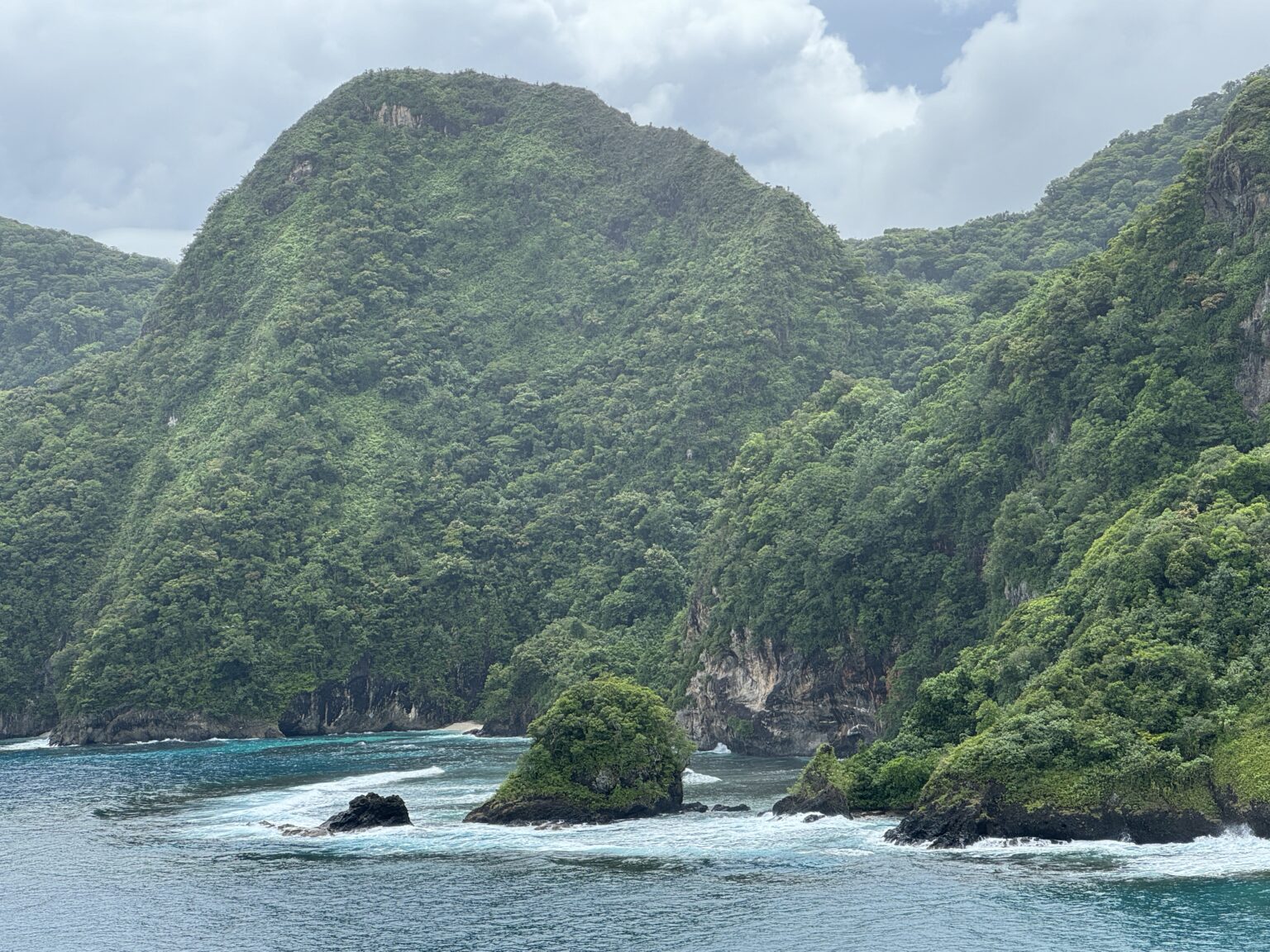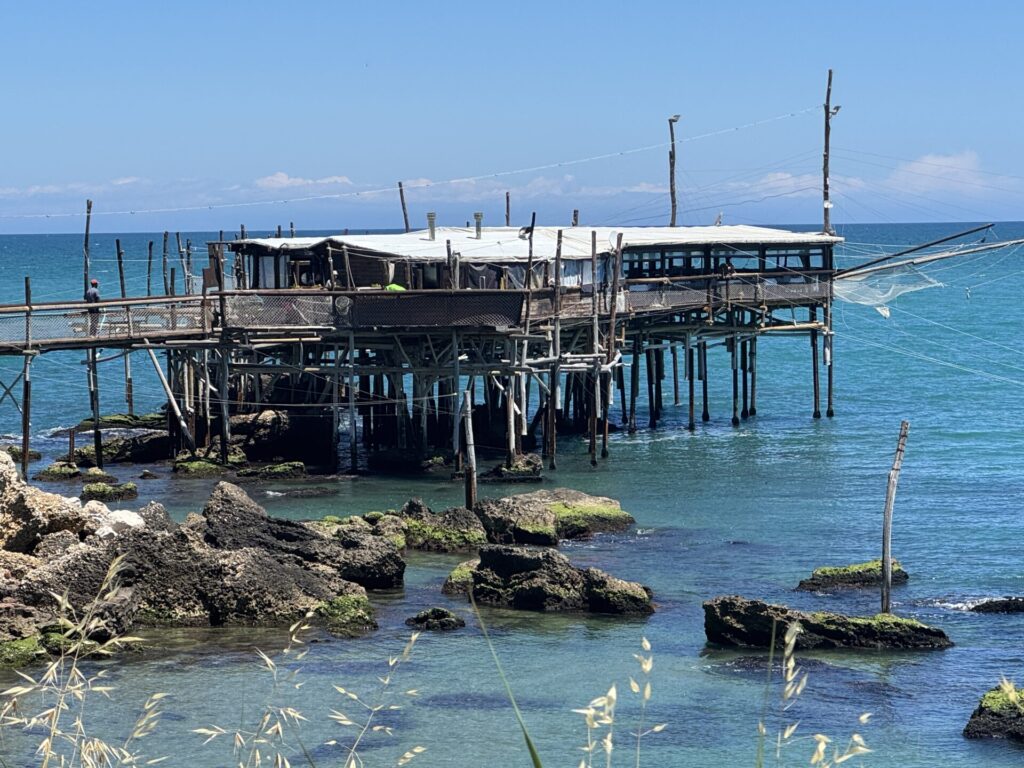Located some 2,600 miles southwest of Hawai’i, the National Park of American Samoa is one of the most remote national parks in the U.S. It takes much effort and time to get here, but intrepid travelers who make the journey will discover untouched coral sand beaches, secluded villages, rainforests, rare flora and fauna, splendid vistas of land and sea and a rich culture.
This park was one of the few remaining national parks in our country left on my list to visit. My husband and I flew from Hawaii to Samoa – the Independent State of Samoa – formerly known as Western Samoa, which entailed a six-hour flight. This was homebase for us for a week.

During this time, we set aside one day to spend on American Samoa. Getting to American Samoa involved taking a 25-minute flight on a tiny airplane, but meant a 24-hour time difference due to crossing the International Dateline.
Talk about time travel! We left on a Tuesday morning from Samoa and arrived on a Monday morning in American Samoa. Upon return, we departed from American Samoa on that Monday in the late afternoon and arrived back on Samoa on Tuesday late afternoon. Confusing, yes! Plus, if you rent a car, which is highly recommended, you’ll be going from driving on the left side of the road in Samoa to the right side on American Samoa, and then the reverse on your return.
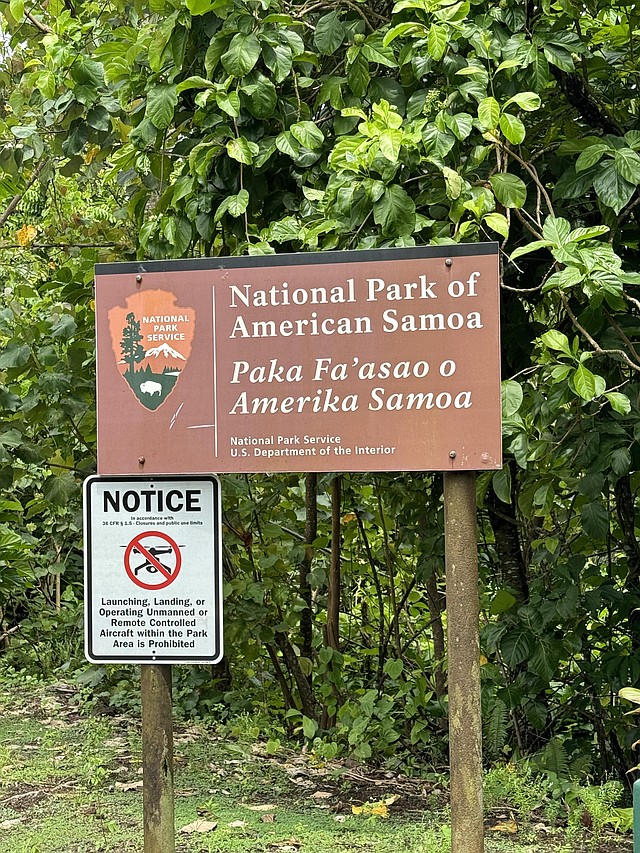
With only a day to spend in the park, we focused our energies on Tutuila, American Samoa’s main island and the location of its capital city, Pago Pago. This is where about half of the park is located. The other half is situated on American Samoa’s very remote Manu’a island group, sixty miles east of Tutuila, where there are no restaurants, bars or shopping and a total of less than 1,500 people reside. As you can imagine, it takes even more effort and determination to reach these islands.
The National Park of American Samoa was established in 1988, but the NPS couldn’t buy the land because of the traditional communal land system. This situation was remedied in 1993 when the NPS entered into a 50-year lease for the land from the Samoan village councils.
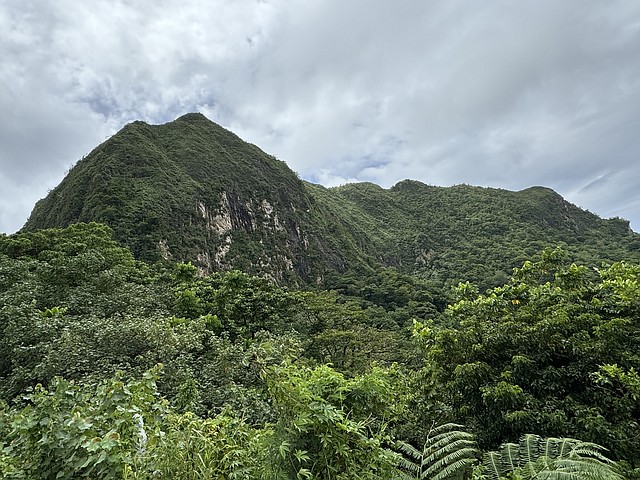
The park covers about 10,000 acres, though around 4,000 of these acres are underwater, offshore. It is one of the least visited units of the national park system, with visits per year in the low thousands versus millions for many mainland parks. Snorkeling and hiking are the most popular activities for visitors.
The national park headquarters and visitor center is located in Pago Pago and is a good place to start, as rangers are available to help plan your visit. You’ll learn this park is unique in that it preserves and protects Indo-Pacific coral reefs, the endangered flying fox (a fruit bat with a three-foot wingspan) and the only mixed-species paleotropical rainforest in the U.S. It’s also responsible for preserving the Samoan culture.
The culture here remains much as it has for 3,000 years with family and extended family as the core of society. It’s a place with strong traditions, strict rules and an important hierarchy. Elders and village chiefs are highly respected and each of the 75 plus villages has a chief, who is responsible for the wellbeing of his people.
Samoan is spoken by more than ninety percent of the native inhabitants, though English is also an official language, resulting in most of the population in American Samoa being bilingual.
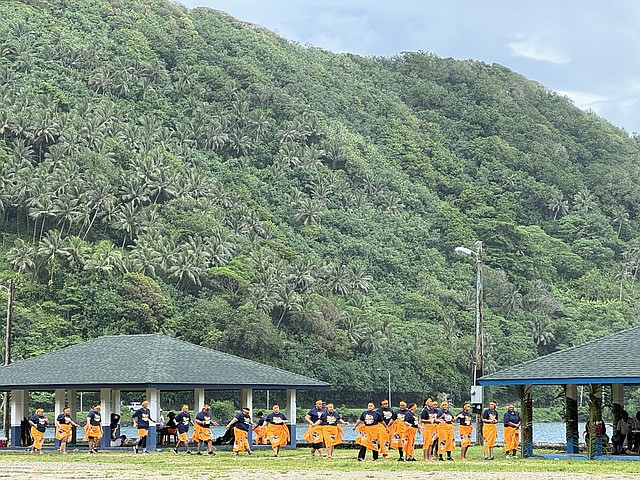
You’ll get accustomed to seeing locals wearing colorful lavalava or sarong and puletasi or patterned skirt and tunic. Both men and women can wear the lavalava, but only the women wear puletasi.
Every Sunday, Samoan villages observe religious prayer and rest, for this is the “Samoan Way.” Thus, it’s no surprise to find numerous churches of all sizes and shapes.
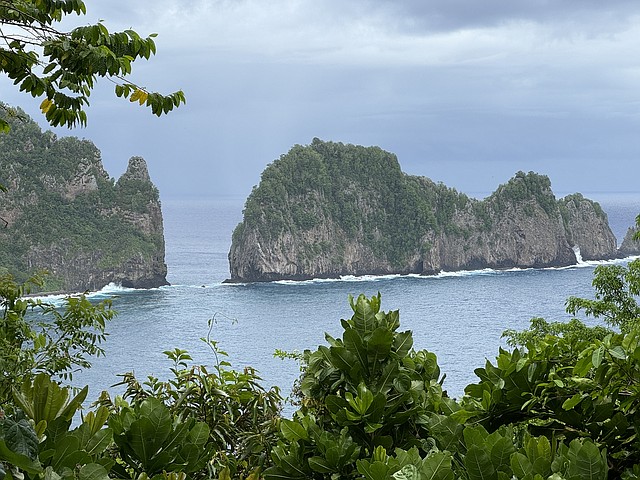
Much of the landscape on American Samoa is untamed and rugged and boasts astounding natural beauty. On Tutuila, the park area spans about 2,500 acres of land with some 1,200 acres of ocean. The terrain is primarily mountainous with volcanic ridges overlooking the waters of Pago Pago Harbor. The harbor is a collapsed volcanic caldera and one of the largest natural harbors in the South Pacific. It almost cuts the island in two.
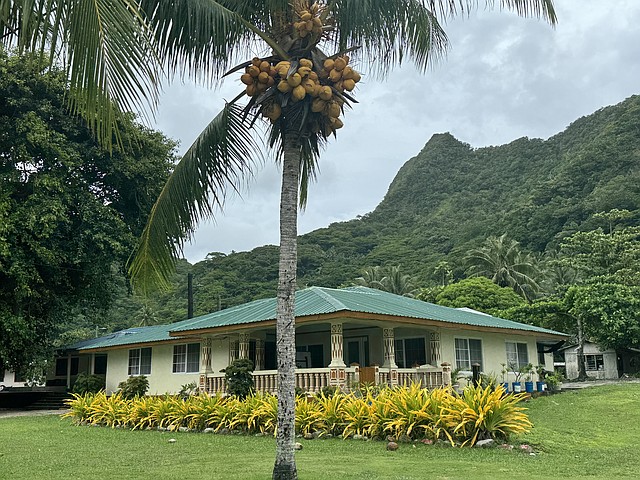
There are a few scenic drives in the park, including one over breathtaking Fagasa Pass to the village of Fagasa. Located right on the bay, the village is a lovely spot. It’s quiet and picturesque, making you feel like you’re truly on a remote island when in fact you’re just minutes over the mountain from the harbor.
Another takes you over Afono Pass to the village of Afono, then on through Amalau Valley to the village of Vatia. This is an equally scenic route with dramatic vistas and peaceful little communities.
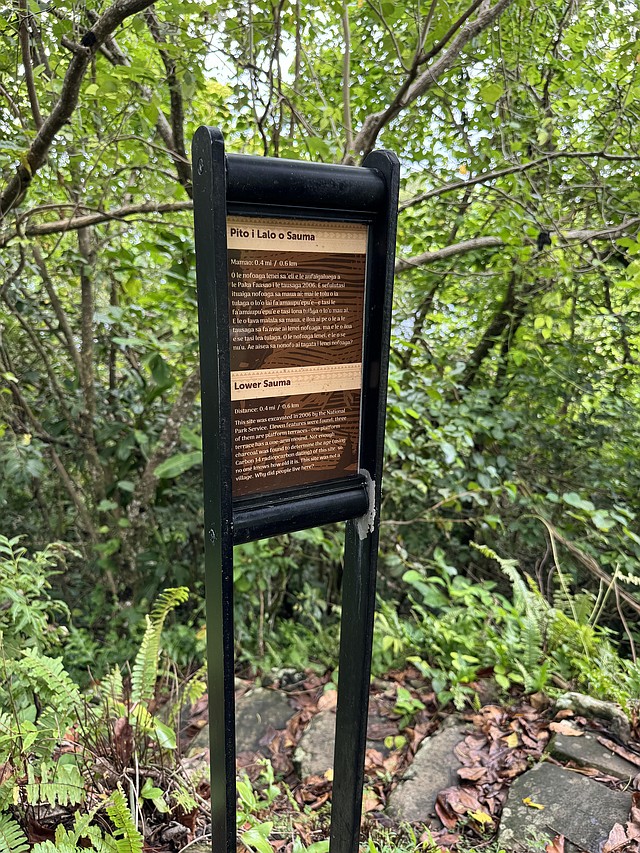
As for hikes, the Pola Island Trail is an easy one to start with, as it’s a short, fairly flat route leading to a rocky beach with good views of the coastline and Pola Island. Rangers will tell you to avoid the unfriendly dogs that lurk by driving past the last house and parking at the end of the paved road. Another hike is the Lower Sauma Ridge Trail, which has great panoramas of the northeast coastline of the island. The Tuafanua Trail involves a series of switchbacks from Vatia Village through a rainforest to a hidden coastline. On the steep descent, you’ll need to use several ladders with ropes.
There’s also the WWII Heritage Trail that includes WWII installations that helped protect American Samoa from a Japanese invasion. It too involves steep ladders with ropes.
Those seeking more challenging routes will find the Mount Alava Trail and Mount Alava Adventure Trail worthy of the rating. The latter boasts a total of 56 ladders and 783 steps with a number of very steep sections.
More hikes can be found on the island, however a number of them are outside of the national park on private land and can be difficult to find. And often you need permission for access, which can involve the transference of money.

When hiking, you’ll rarely encounter others on the trail, so you’ll have this glorious nature basically to yourself. In the dense rainforest, it’s intensely verdant with all kinds of tropical plants. I had a flash of “Honey I Shrunk the Kids,” as I felt dwarfed and overwhelmed by the flora.
Though I kept my eye out for the flying fox, unfortunately I didn’t spot one. This creature is native to American Samoa. It weighs a mere one pound and typically likes to hang out along the ridgetops. It roosts upside down, hanging by its feet from the trees, and is known as a prolific forest pollinator, helping to ensure the health of native forests.
The flying fox is classified as an endangered species. People continue to hunt it despite laws regulating this activity. Also, because of increasing human population and the need for land and agriculture, the creature’s habitat is being encroached upon. Additionally, the islands are a prime target for hurricanes, which can be devastating to the animal population.
For sustenance, you’ll want to get any food or supplies you’ll need in Pago Pago. The city, which is known for its dramatic backdrop, has restaurants, hotels (no high rises) and shops, but everything is on a smaller scale. You’ll also likely note the tuna canning plants as you drive along the road. Canned tuna is American Samoa’s main export.
South Seas hospitality and kindness prevails here, as it does across the Pacific. People are friendly and will greet you with a smile. And they are always willing to help with directions and information.
Debbie Stone is an established travel writer and columnist, who crosses the globe in search of unique destinations and experiences to share with her readers and listeners. She’s an avid explorer who welcomes new opportunities to increase awareness and enthusiasm for places, culture, food, history, nature, outdoor adventure, wellness and more. Her travels have taken her to nearly 100 countries spanning all seven continents, and her stories appear in numerous print and digital publications.

